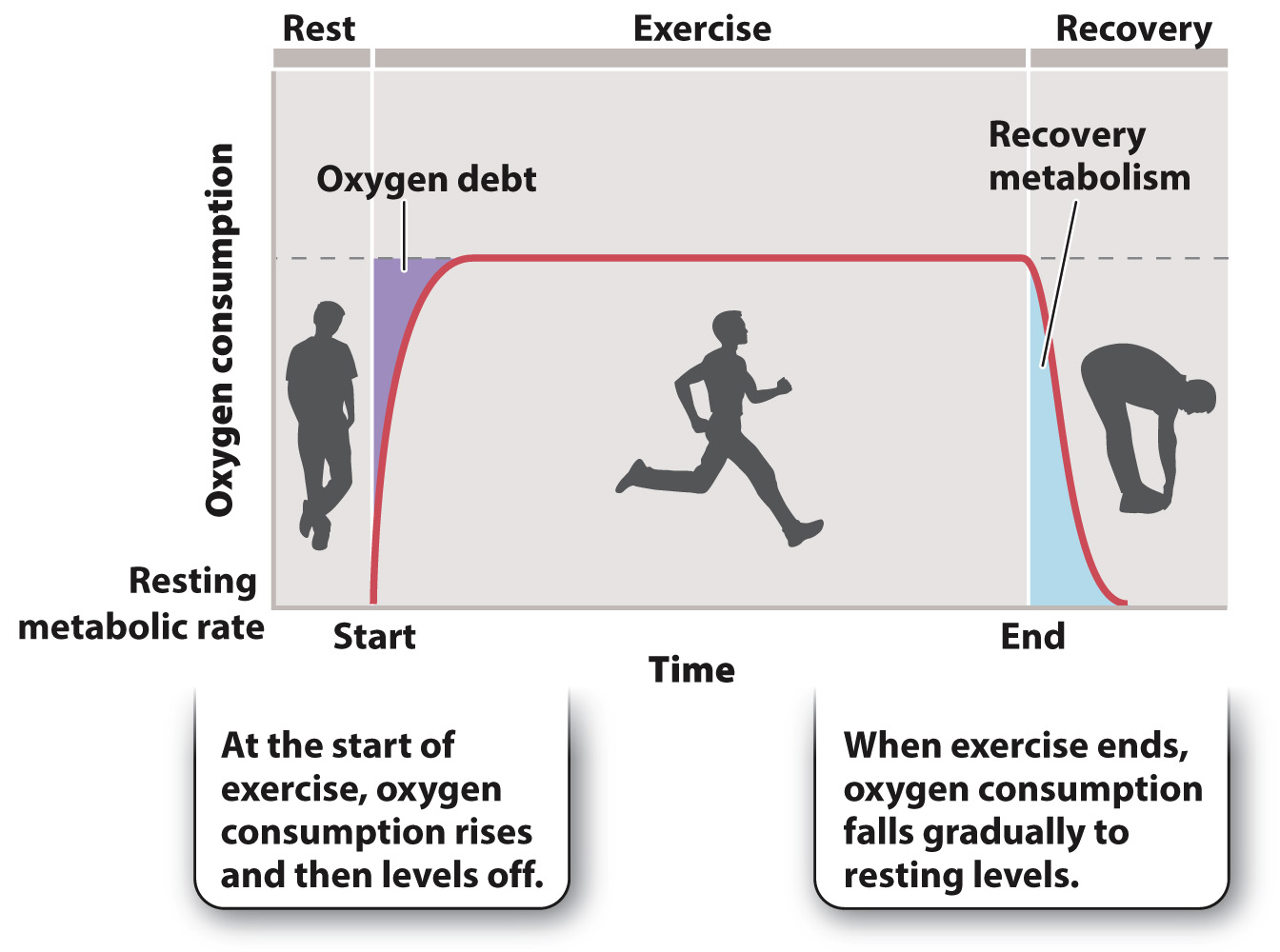Metabolic rate varies with activity level.
An animal’s overall rate of energy use is its metabolic rate. Metabolic rate can be measured by the animal’s rate of oxygen consumption, which reflects the rate of aerobic production of ATP.
Metabolic rate is affected by many factors, one of which is the activity level of an organism. When an animal shifts from rest to activity, its metabolic rate and oxygen consumption rise to meet its increased demand for ATP. The onset of activity requires immediate energy, which in animals is provided by specialized energy stores in their tissues. In vertebrate muscle cells, for example, phosphocreatine is a ready source of high-
With longer activity, the ATP needs of the animal are met by aerobic respiration in mitochondria. Therefore, the rate of oxygen consumption initially increases, then levels off (Fig. 40.2). At this point, the animal’s need for energy is being met entirely by aerobic respiration. Once mitochondrial ATP production increases, the steady state production of ATP depends on adequate transport of oxygen to the tissue by the cardiovascular system (Chapter 39) as well as by diffusion of oxygen into mitochondria.

Sprinters rely heavily on anaerobic ATP production for intense short-
When activity ends, the animal’s oxygen consumption rate declines but does not immediately return to resting levels, as shown in Fig. 40.2. The elevated consumption of oxygen following activity is the animal’s recovery metabolism. It represents the continued metabolic energy required to reestablish the resting metabolic state of the cells. During recovery metabolism, cells re-